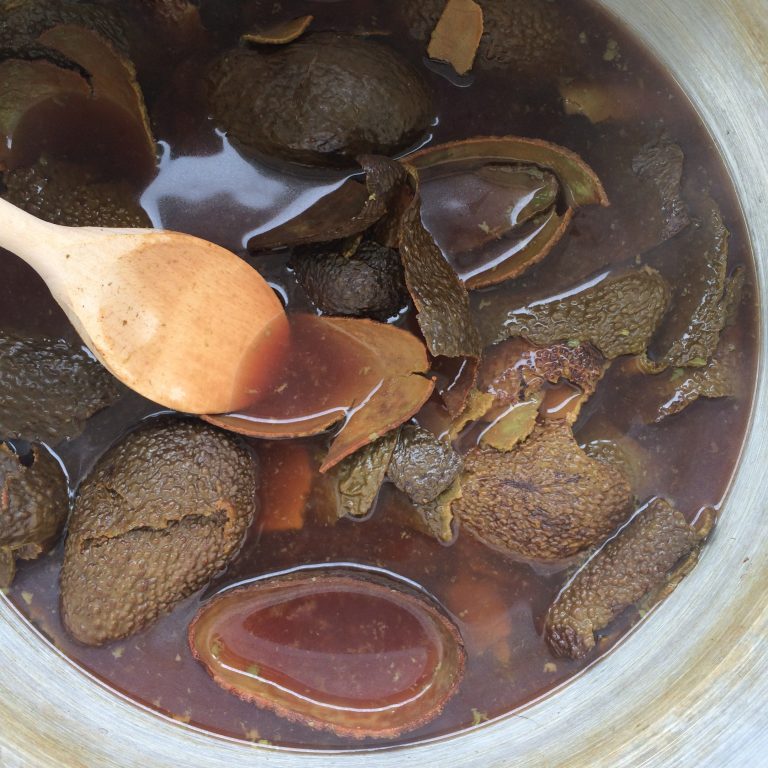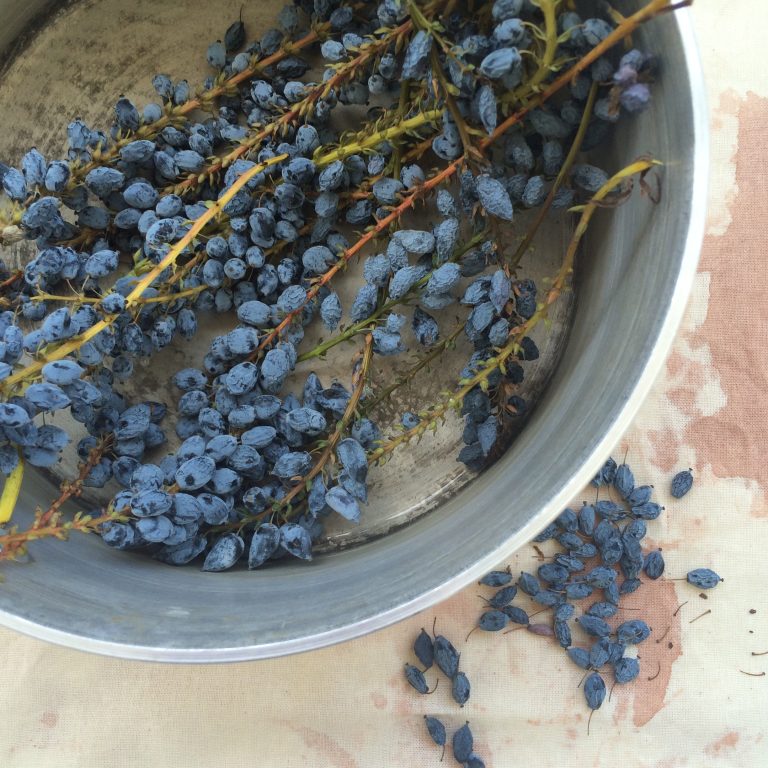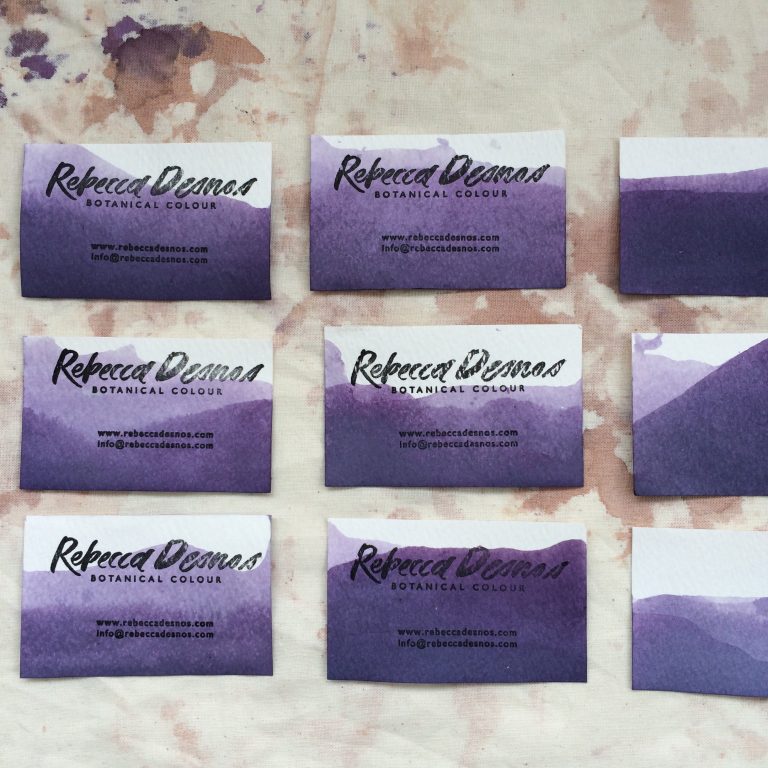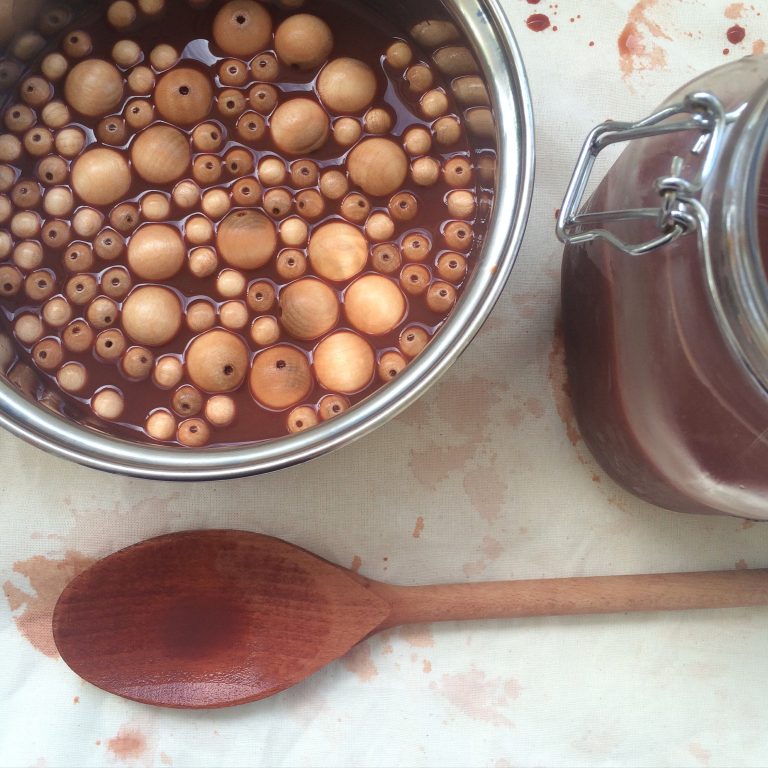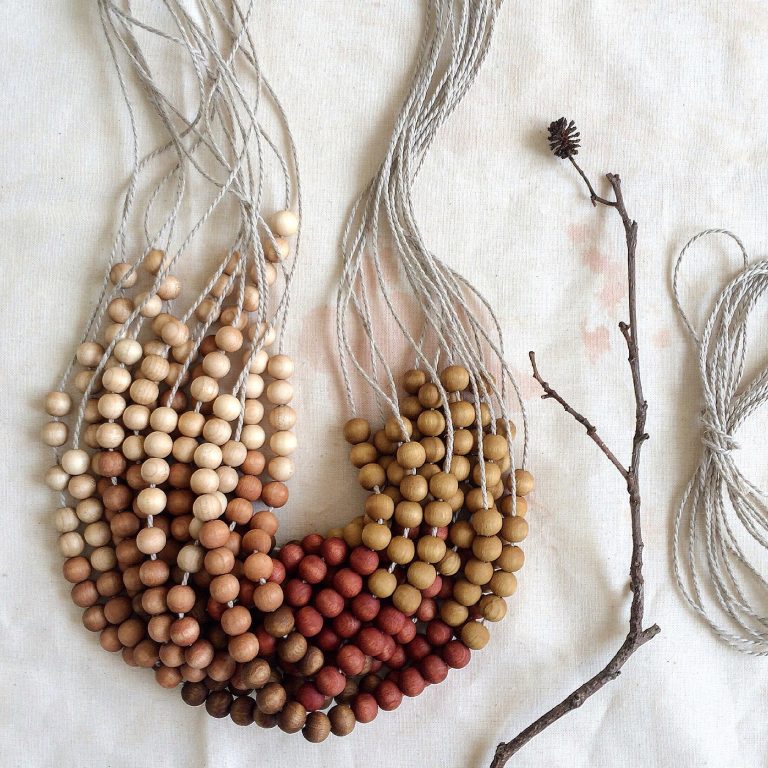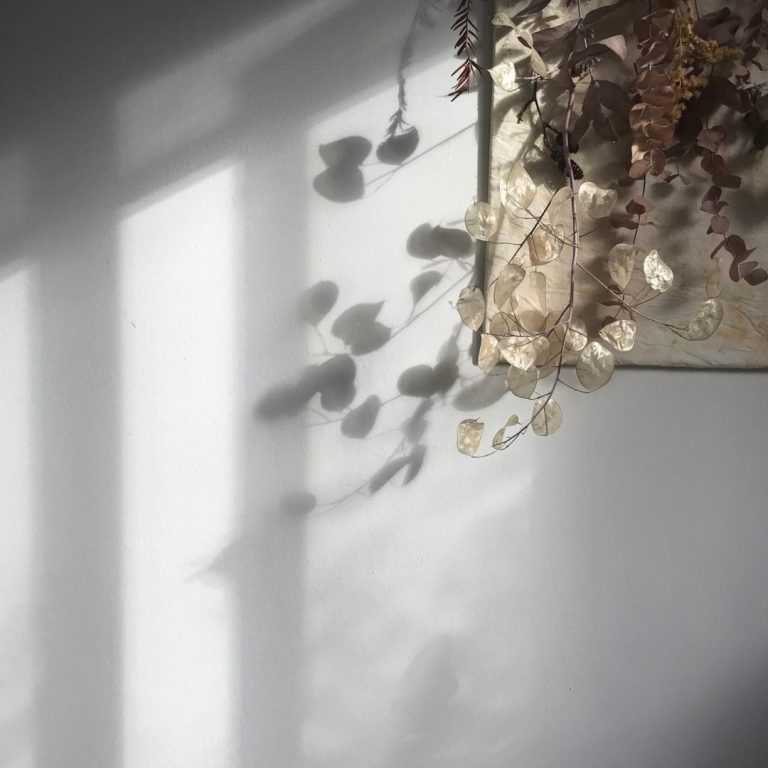I had a stem of dried eucalyptus leaves waiting to be used, so I decided to experiment with bundle dyeing for the first time. I used bamboo fabric that was pretreated in soya milk and left to cure for around a week.
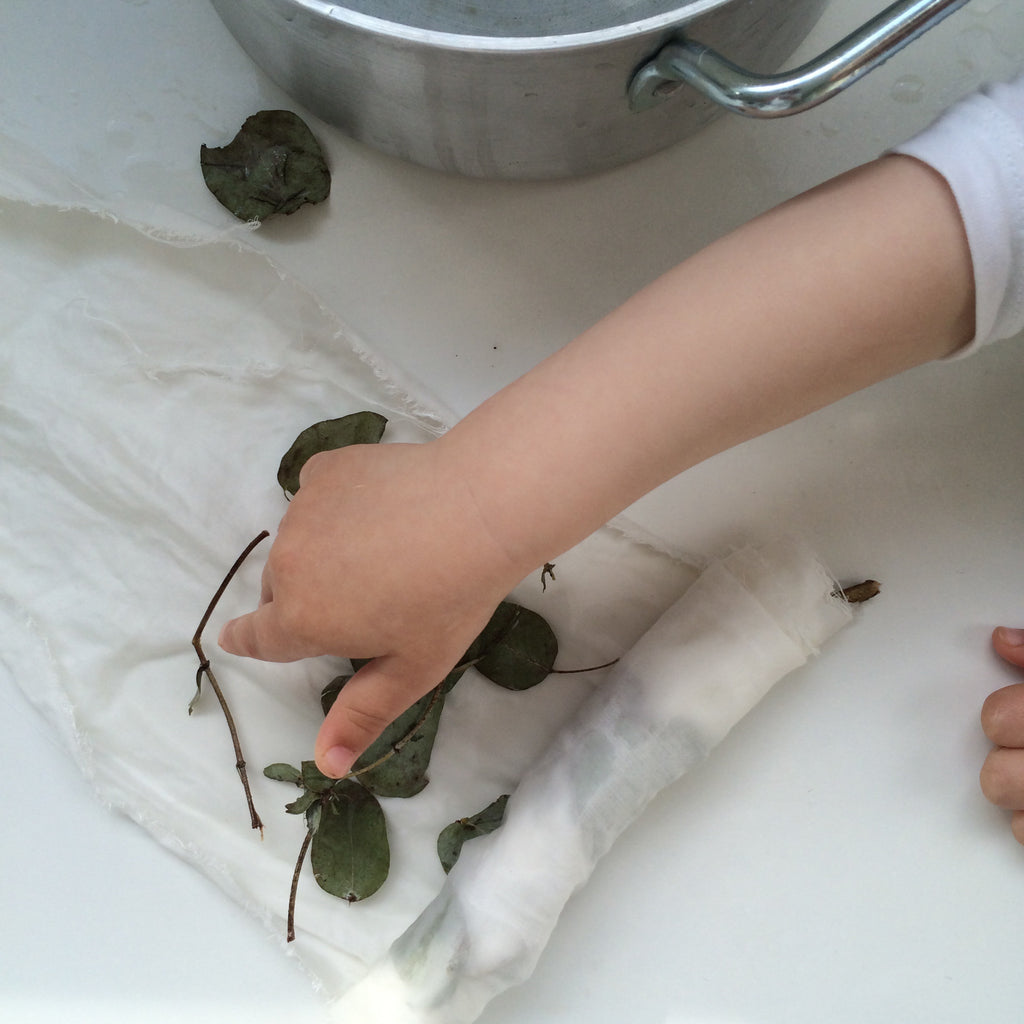
My son loved laying the leaves onto the fabric as I rolled up the bundle. He saw what I was doing and rather than stop him from touching it, I just let him get involved and he had so much fun.
Below is the result of steaming for one hour. I couldn’t believe my eyes as I unrolled the fabric!
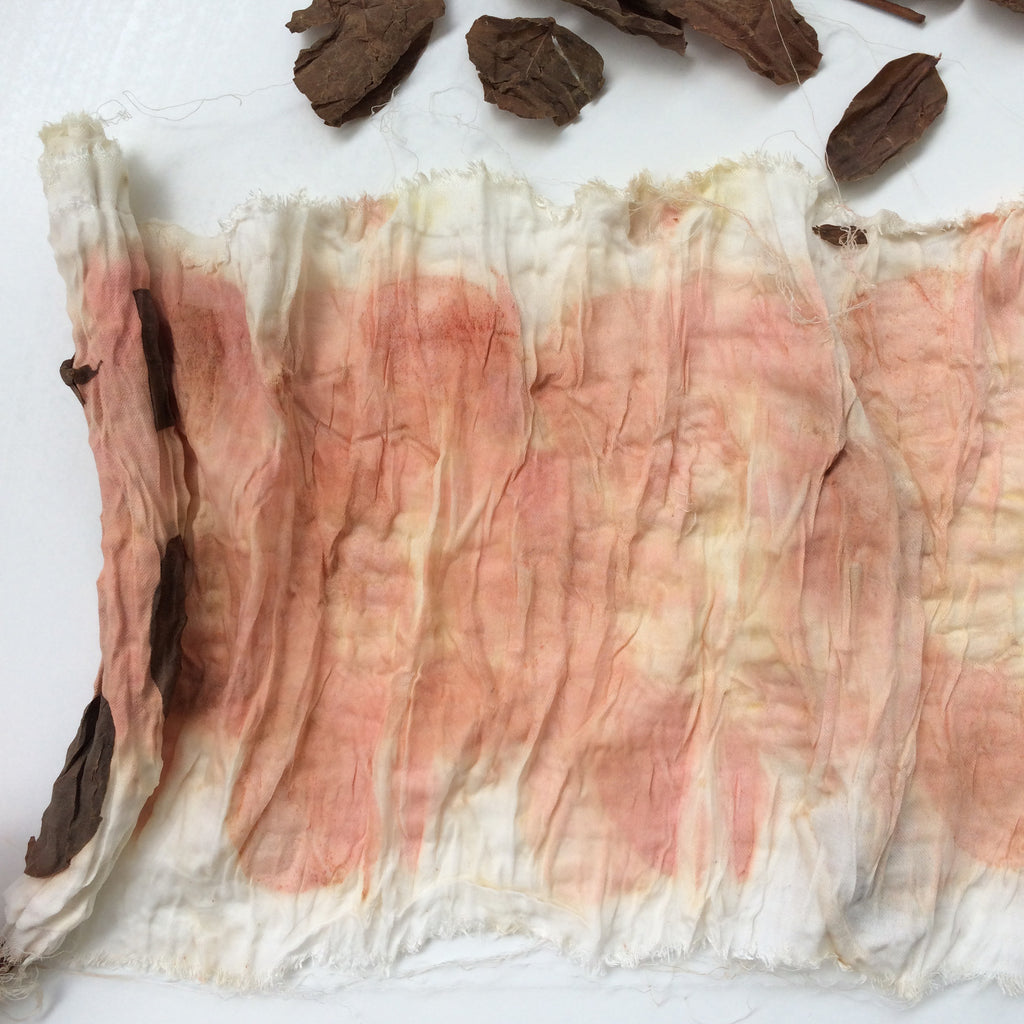

I reused the same leaves in a second bundle with new fabric to see if the second steaming would extract even more colour, or perhaps different colours. This is an idea that I read about in one of India Flint’s books.
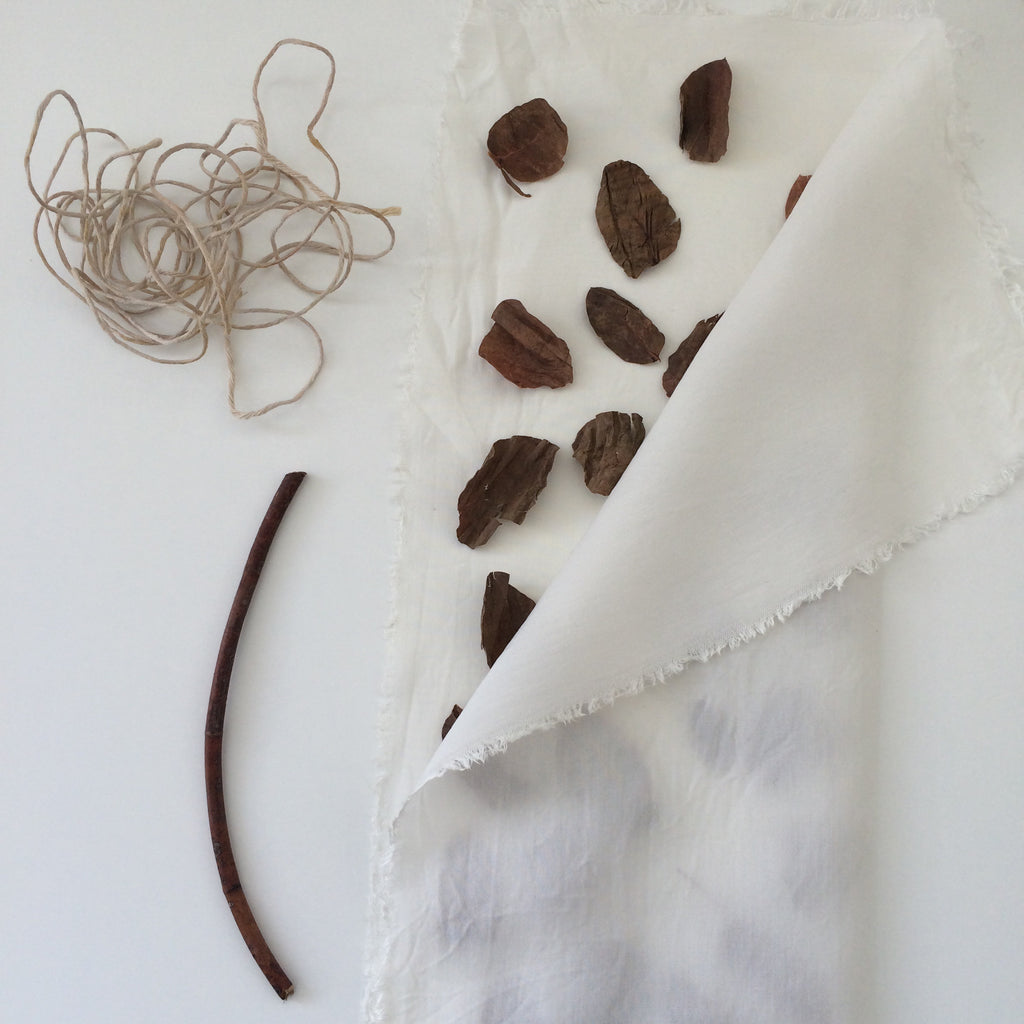
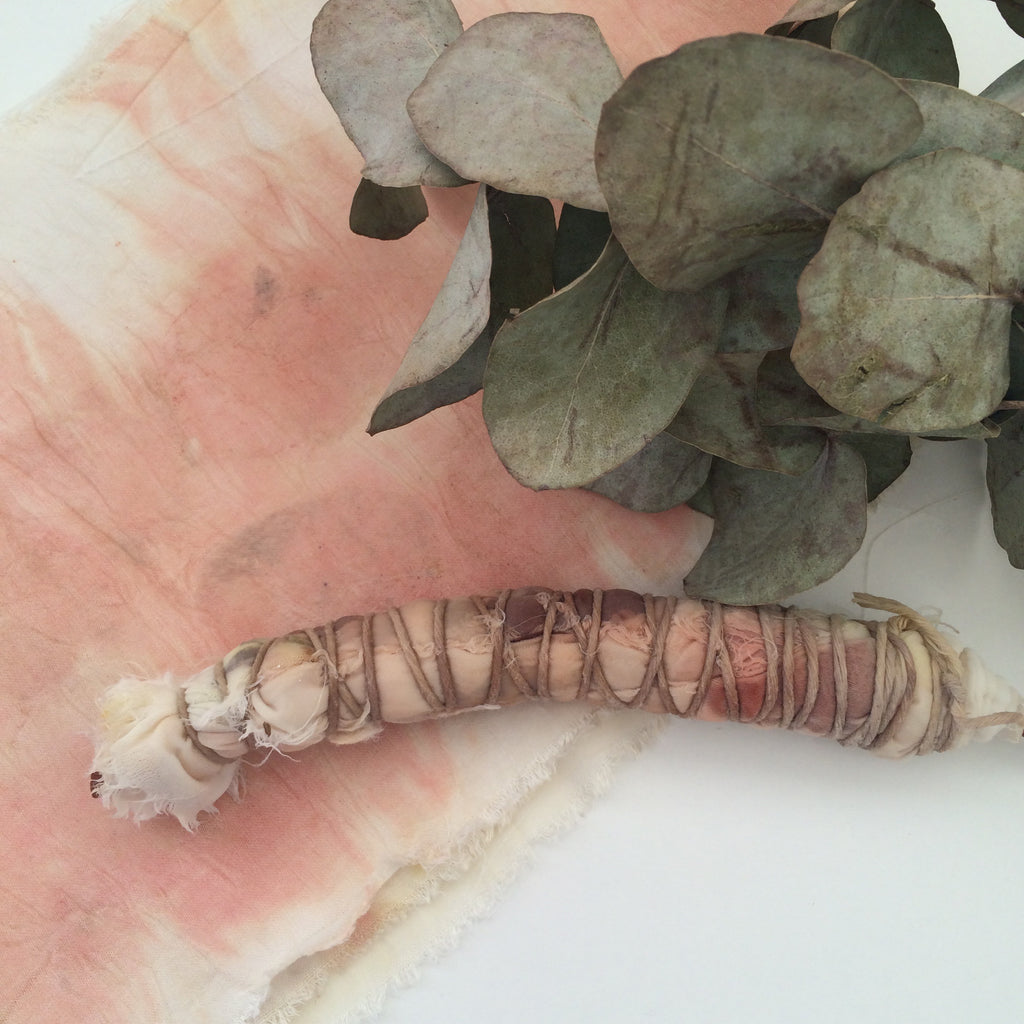
The colour was just as beautiful as the first bundle and there were flashes of yellow this time.
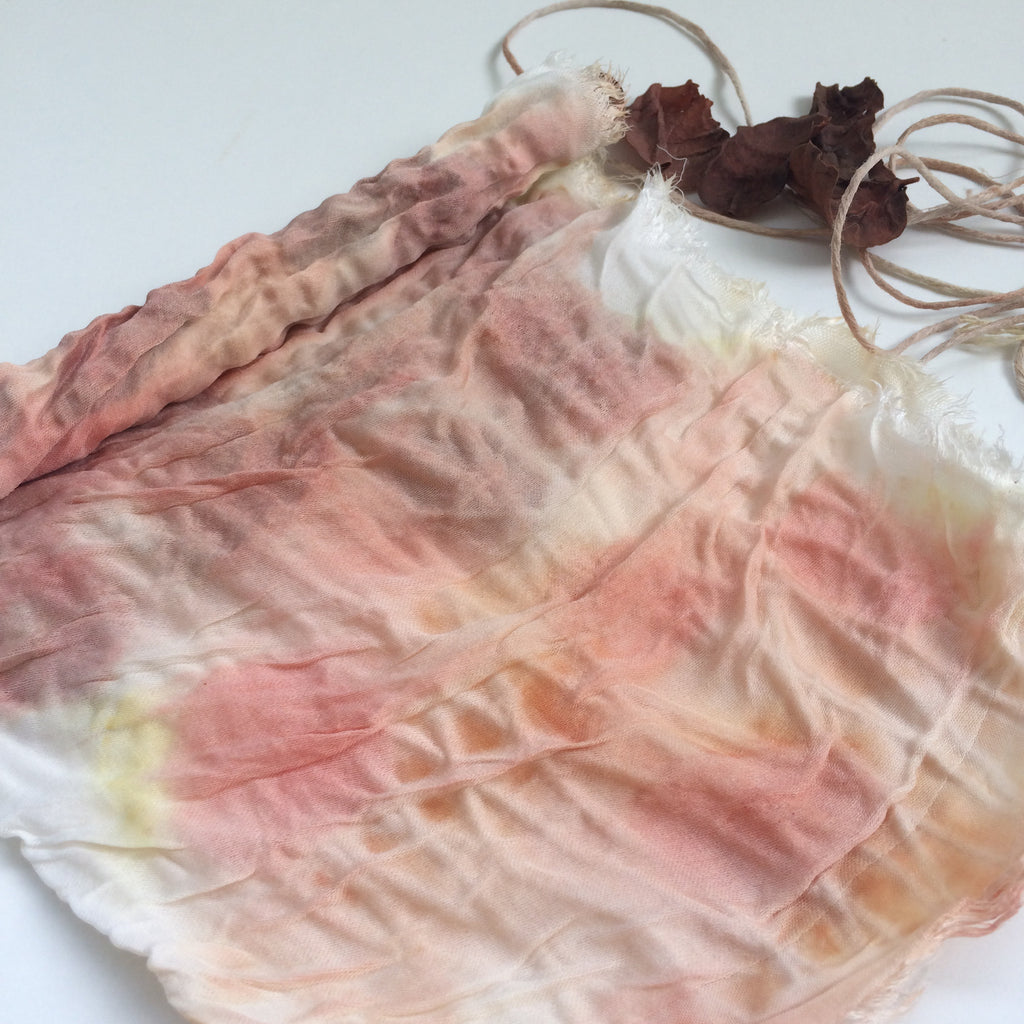
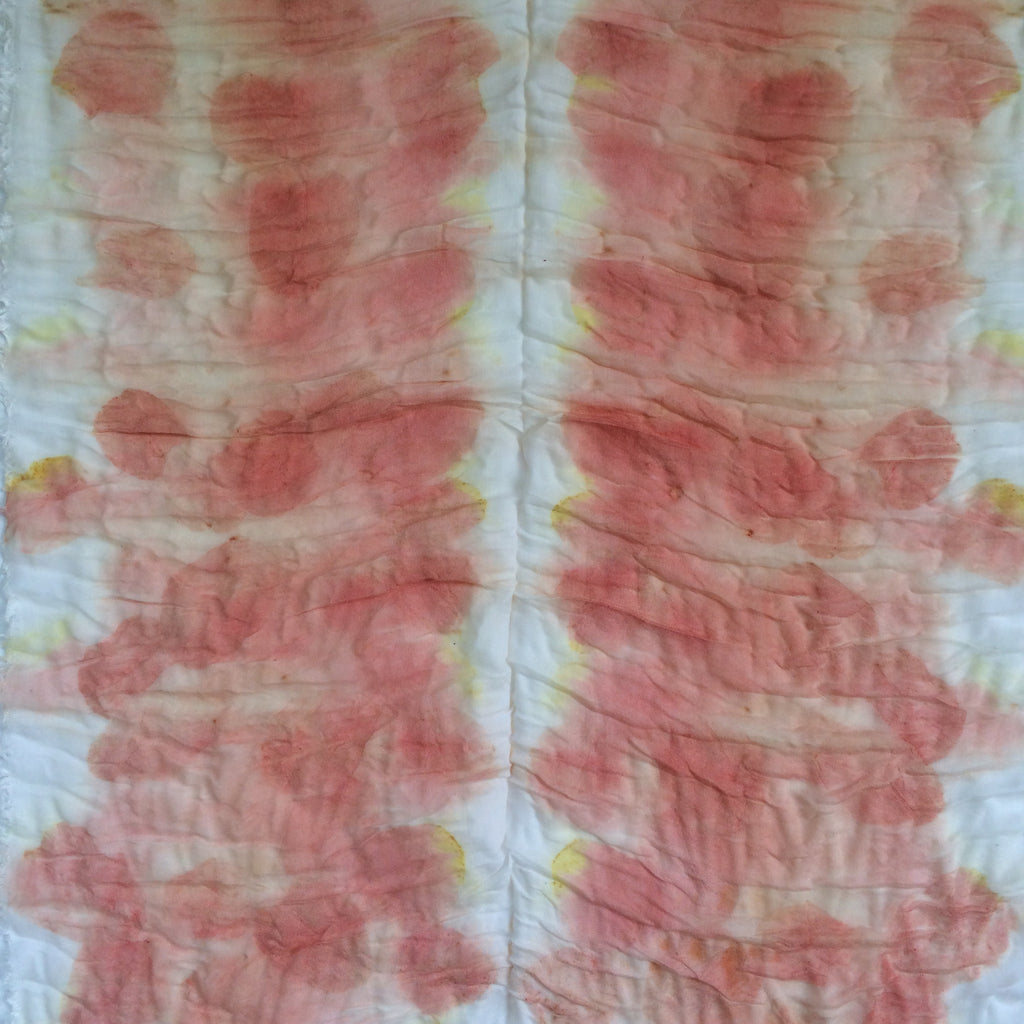
The leaves were used a third time.
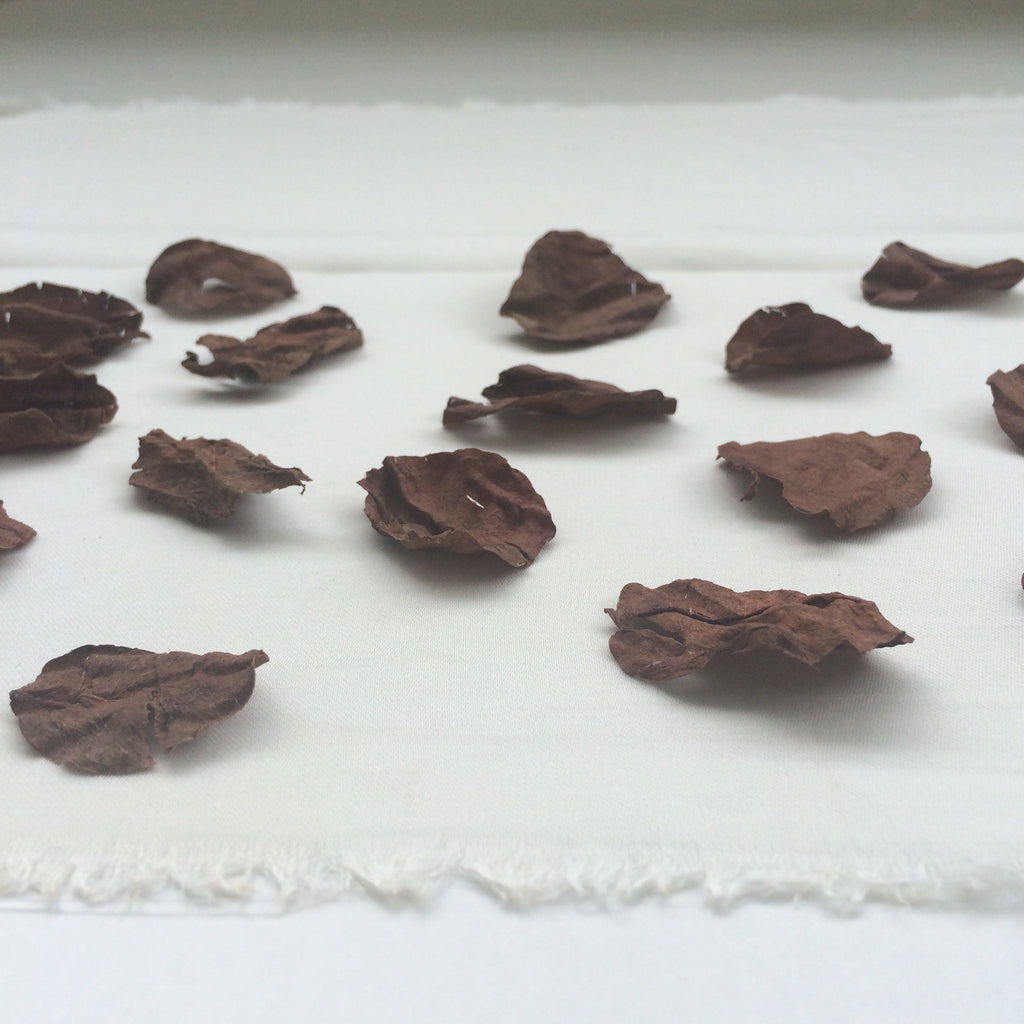
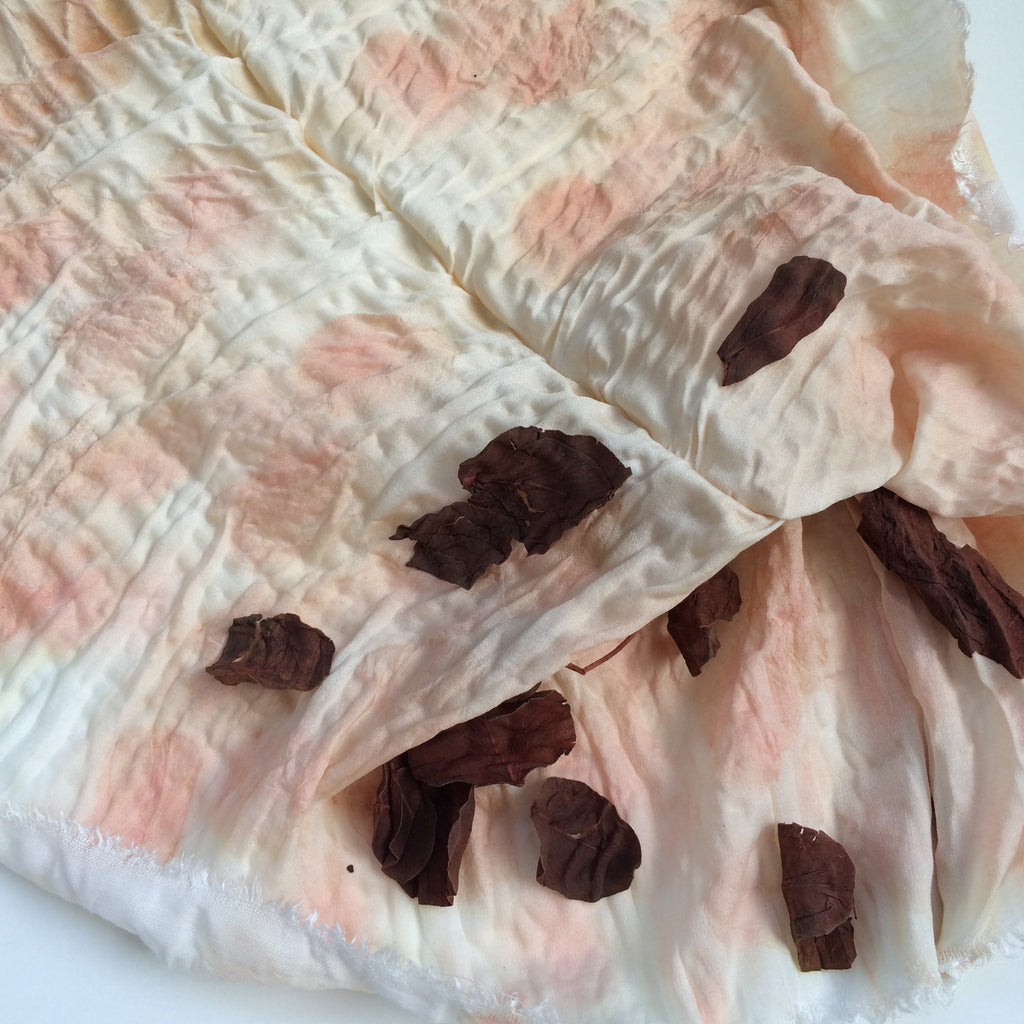
I was amazed how much colour could be extracted from just a handful of leaves. Even the third print produced a pretty pattern.
Below are the three experiments. The first bundle is at the bottom and I discovered that the second steaming (middle) seemed to produce the deepest corals with the greatest range of colour.
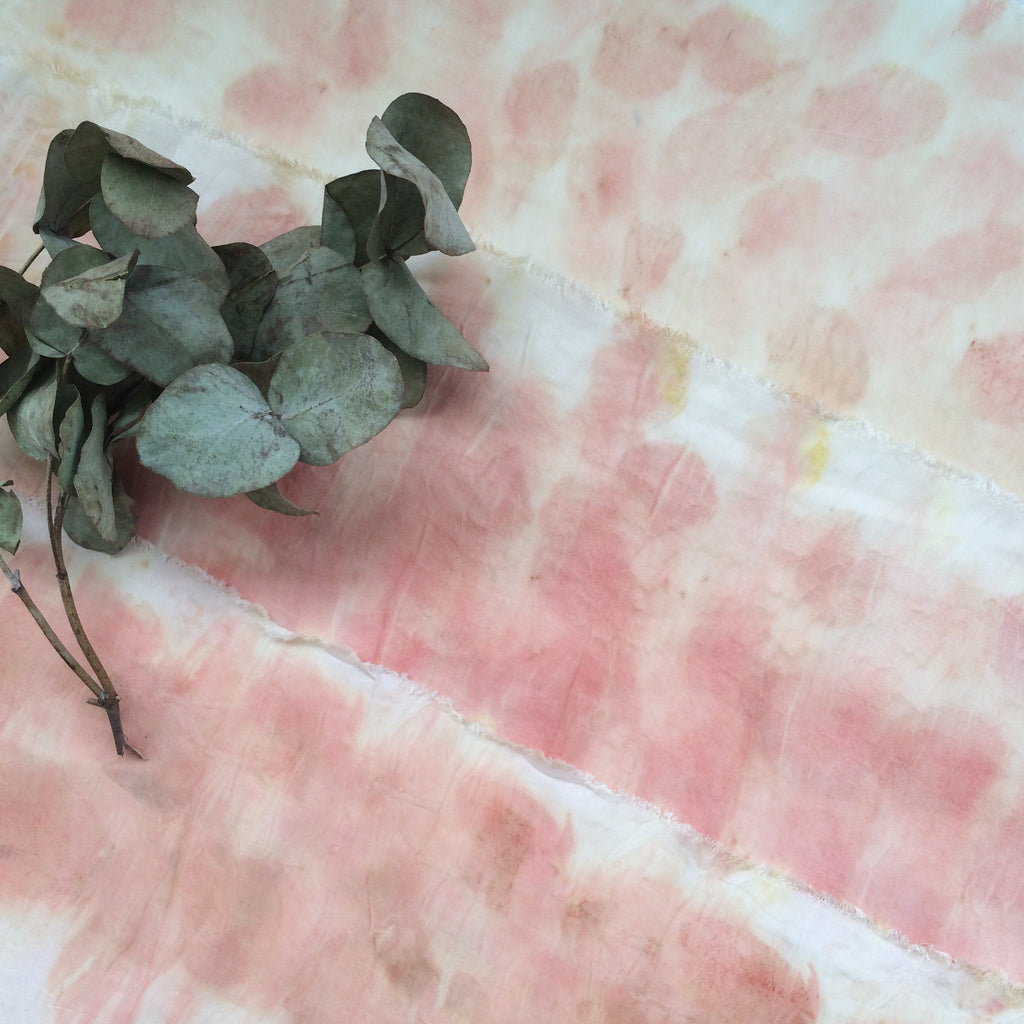
Bundle dyeing, or eco printing as it’s also known, is definitely the most economical way of plant dyeing as such a small quantity of plant matter is needed.
In contrast, when extracting colour into a liquid dye bath, a 1:1 ratio of plant material to fabric is usually used, and a lot of colour is ‘wasted’ as it never attaches to the fabric and ends up poured away at the end of the process. When making a ‘dye soup’, the water acts as a middle man and holds the colour, but in bundle dyeing there is no middle man; the colour transfers directly from the plant into the fibre, with no colour wasted in the process. Also I feel that I used much less water steaming the bundles than I would in a dye bath, although I would need to actually measure the amounts to be certain.
After my first bundle dyeing experiment I am now hooked and can’t wait to do more!

